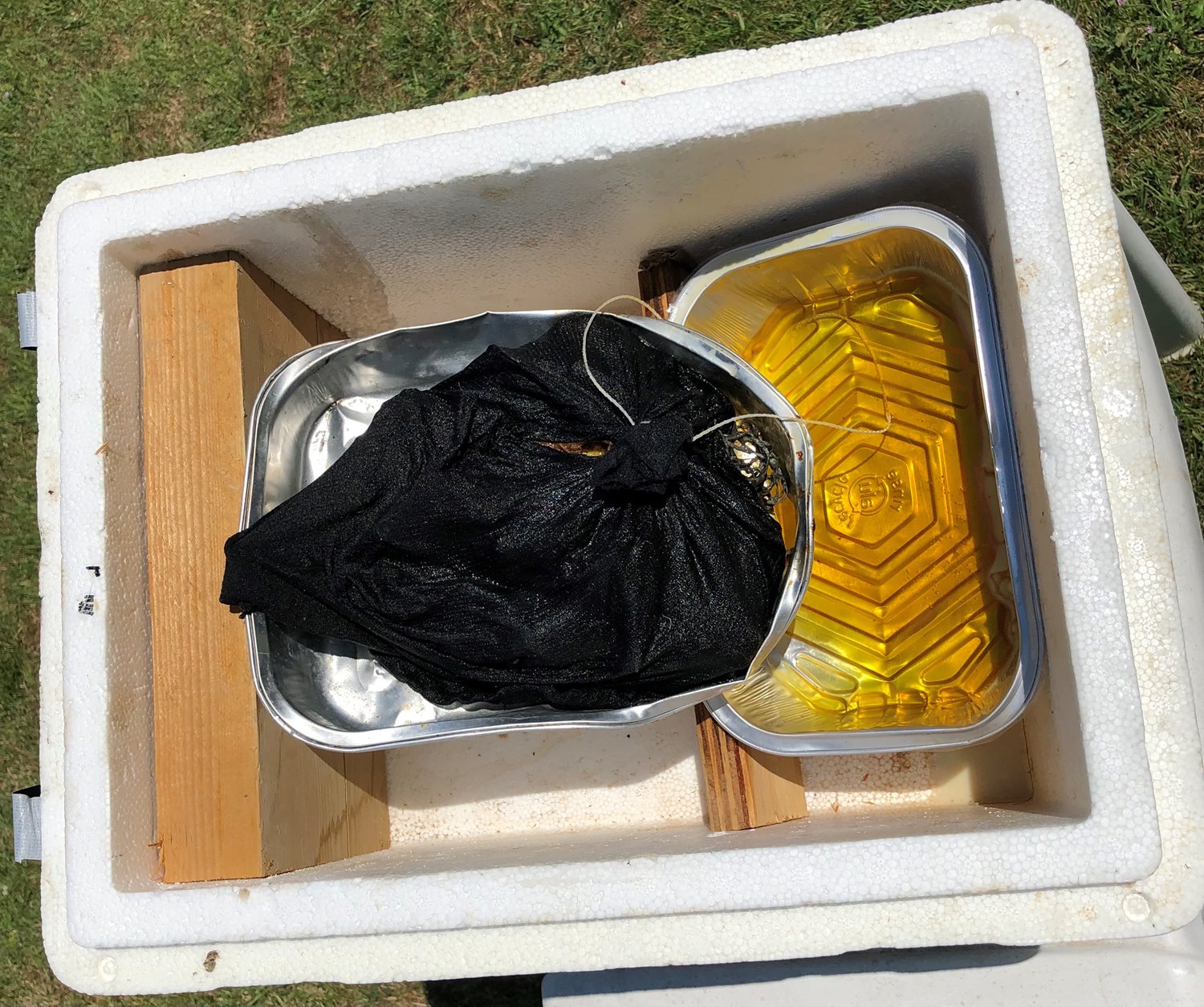Bee Blog September 2022
This month's update from local beekeeper Gerald Bushby
I always look on the final honey collection of the year from my bees as the end of summer. As usual this year I made the final collection at the start of August so as to give the bees plenty of time to build up stores to last them through the winter. This year it is somewhat hard to see this honey collection as the end of summer as for most of this month we have been in the middle of a second heat wave of the summer with clear blue skies and daily temperatures in excess of 30 decC.
My honey collection this year was not only the last of the year, it was the first of the year as well. Surprisingly I was able to extract about 30lbs of honey from my one hive which is about average for a hive generally. This is remarkably good for this hive given that I have been removing several frames over the course of the season in an attempt to create a new colony, each time reducing the number of bees available in the main hive to gather nectar.
During the first heat wave there was a good nectar flow and the bees seemed to be very active. The nectar flow appeared to dry up during this second heat wave however with greatly reduced bee activity. I suppose this reduced flow is understandable given the drought conditions. Many plants in my garden are dying because of the drought. If plants are dying they will not be producing nectar.
This was another reason for removing the summer honey so that I can immediately start to feed the bees with sugar solution and ensure that they have easy access to water. It's proving to be a very challenging summer.
I finished my blog last month saying that I would be pleased if one of the three nucleus colonies that I had started was able to produced a queen. Fortunately that is how it has worked out. One nucleus has produced a queen but the other two have not. One of the new nucleus colonies has new brood, indicating a laying queen, and I have actually seen the queen during an inspection. Success at last.
Of the two remaining nucleuses, the bees in one absconded, I have no idea why, leaving an empty box and the other showed no brood, sealed or otherwise, indicating that no queen was present. So as not to leave these bees to die out naturally I merged them with their sisters in the successful nucleus bolstering their numbers and giving them more workers to help the colony develop.
I will leave the newly formed colony in the nucleus box over winter and only move them into a full sized hive in spring next year. I hope to be going into winter with two strong colonies. This year, given the drought and my loss of two colonies last year I will pay much more attention to feeding during the winter months.
One of the by products of beekeeping is bees wax. The bees produce wax to store the honey and then cap it over with a thin sheet of wax to preserve it. When I harvest the honey I have to remove the capping. After I have drained off all of the honey from the capping I wash it and then melt it down.
Historically Monks used to carry out this same process. They kept bees not only for their honey but also as a supply of excellent quality wax to make candles to illuminate Churches. They did not even waste the water which they used to wash the capping. This was just left in containers and naturally fermented forming Mead.
My photograph this month shows how I process the wax capping to form cakes of beeswax with my home made solar wax melter. The melter is made from a polystyrene box, supplied when we bought some fish mail order. I squeeze the wax capping together into balls and place them in the end of a pair of my wife’s tights, the black bag in the photograph (the tights!), old and washed. This is then placed into the central aluminium tray, from the purchase of a chicken. A sheet of glass, from on old picture, is placed over the box and the box is placed at an angle of about 30deg on a table facing the sun. As the temperature builds up the wax drips into the bottom aluminium tray, an old ready meal tray from the supermarket. In the cooler evening the wax solidified into a block of filtered bees wax ready for numerous uses. The whole process generates a characteristic sweet aroma second only to the aroma produced during the honey extraction process.
